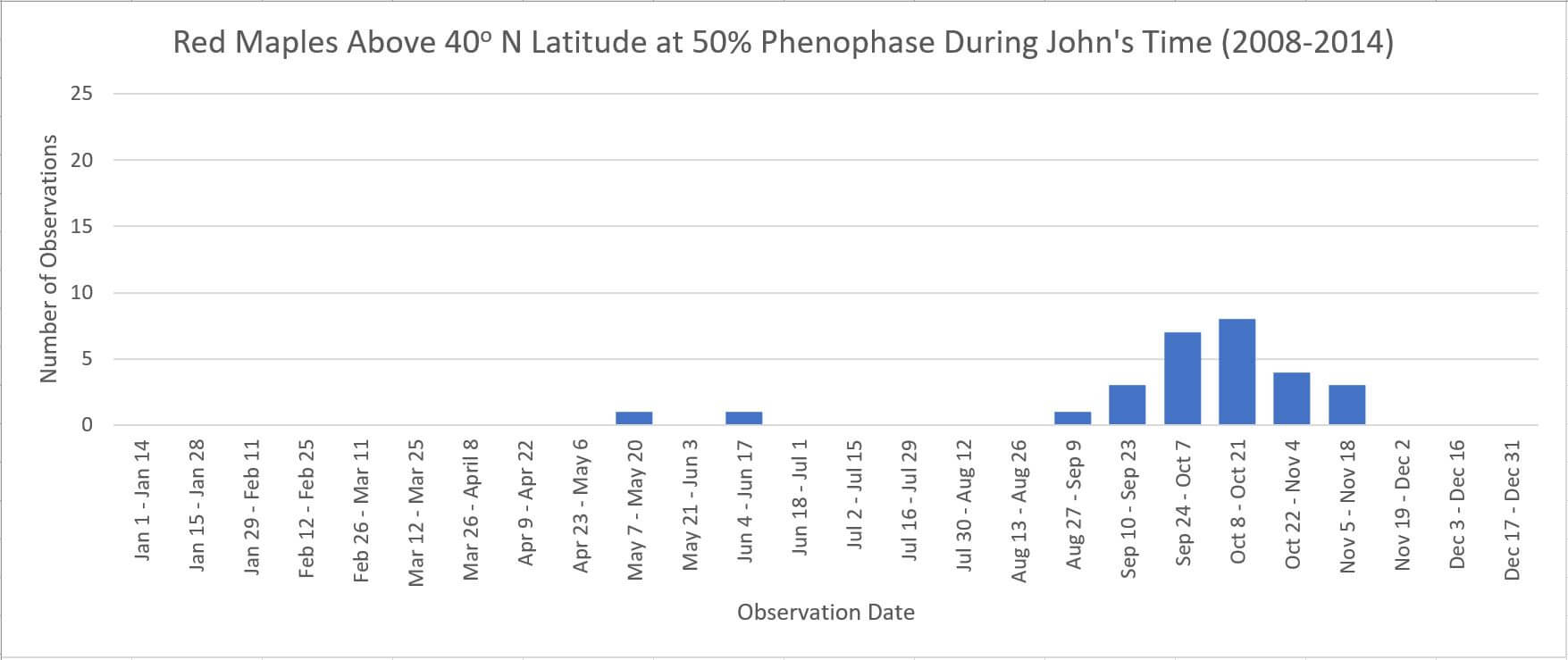Budburst - Fall Colors
About this Inquiry
In this Inquiry, students engage in a debate between two characters about when a bed-and-breakfast (B&B) should have a fall leaf-peeping special to maximize guest experience. Leaf peeping, the activity of viewing trees that are turning to their fall colors, is a major tourism driver in the Northeast, particularly New England, and is dependent on deciduous trees that go through a color-changing phenophase during the fall season. This Inquiry has students look at data on Acer rubrum, or the red maple, which is prolific in the Northeast as well as other parts of the United States and North America. Students are introduced to Budburst, a citizen science project in which volunteers monitor the timing of plant phenology. Students analyze and interpret range plots in FieldScope showing when red maples are in 50% leaf color change across the country, filtering on the times when two fictional hotel owners were running their business separately to see if either of their claims are supported, and what kind of change in the timing of fall might be happening. They then discuss factors that affect the timing of plant leaf change and decide to look at the relationship between latitude (as a proxy for day length and temperature) and timing of 50% leaf change as well as data from 2008-2014 vs. 2015-2018, as that is when the two hotel owners each ran the establishment, respectively. They examine a set of histograms created from Budburst data, one set with data for all latitudes and one set with data from only north of 40 degrees. They evaluate how the data change between the latitude filters as well as between the time filters and determine whether the data support the characters’ claims. They then make a recommendation to the fictional hotel owners on when they should have their special and end by reading or listening to a Public Radio International piece on how leaf-peeping season is changing.
Instructional Days
3 days
Learning Goals
- Analyze data using tools and mathematical models to make claims about when red maples will be in 50% color change.
- Apply concepts of statistics and probability (including mean, median, mode, and variability) to analyze whether the timing of leaf change is changing over time.
- Construct a written argument based on data and evidence from Budburst about whether the prediction supports either of the two characters’ claims and make a suggestion on when the B&B should run its leaf-peeping special.

Type of Analysis
- Graphing - Histogram
- Graphing - Range comparison
- Mapping - Filtering Data by Time
- Mapping - Filtering Data by Area
About this Citizen Science Project:
Budburst citizen scientists work together with research scientists, educators, and horticulturists to answer specific, timely, and critical ecological research questions by making careful observations of the timing of plant life cycle events, also called phenophases. These life events differ depending upon the type of plant, but usually include leafing, flowering, and fruiting phases of plants as well as leaf color and senescence. Spring, summer, fall, and winter phases are all valuable. These observations are used to better understand how plant species and ecosystems respond to changes in climate locally, regionally, and nationally.
Throughout the year, volunteers across the United States monitor individual plants and record the timing of plant life cycle events. Anyone can decide to monitor a plant and can observe and report on one plant on one day or the same plant over many years. They can also observe multiple plants in a single day, or keep track of multiple plants over a longer period of time. People started collecting data in 2007, and since then, almost 10,000 people from all 50 states have participated.
Budburst data are freely available and anyone can use them, including scientists, educators, horticulturalists, and students, to answer specific and important research questions. Budburst is a project of the Chicago Botanic Garden.
To view this project's data on FieldScope click here
Material & content copyright © 2020 BSCS Science Learning. All rights reserved.
Start typing to see search results